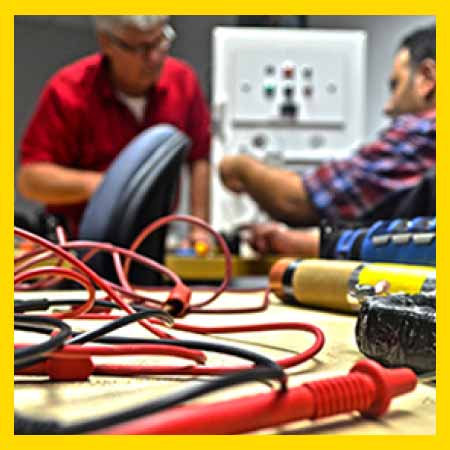Currency
September 07, 2019

Updated NFPA guidelines mean facilities must reevaluate how they perform thermal imaging tests.
A new era has arrived for electrical equipment maintenance, and worker safety is predominant. The days of suiting up in personal protective equipment (PPE) and hoping for the best are over. The NFPA 70E which deals with how to reduce risk through safe work practices on equipment under “abnormal” conditions and when the likelihood of shock exposure, arcing fault and arc flash are heightened have been updated. One of the standout features, The Hierarchy of Risk Control Methods are no longer optional; they have been made mandatory. These requirements apply to any energized electrical work task to help mitigate exposure and reduce risk. The Hierarchy must be applied in sequence to eliminate the inherent risk or reduce it to as low as reasonably practicable. The Hierarchy of Risk Control is made of 6 control levels – Elimination, Substitution, Engineering Controls, Awareness, Administrative, and Personal Protective Equipment (PPE). Each control level must be considered fully and eliminated asan option before moving to the next lower, less effective control within the hierarchy.

For many routine maintenance inspections, thermal imagery has become a staple analytical and diagnostic tool. “With thermography, we can’t see through a cabinet, equipment must be energized and operational and we need to see the connection directly in order to see a hot spot,” Lammert explains. “So, we need to do it either with the door open, energized, and with the proper PPE on; or we can install IR windows which minimizes the worker’s exposure to risk.”
Adding IR Windows to panel covers or electrical cabinets allows technicians to efficiently perform thermal imaging inspections on energized equipment under “normal conditions with all hinged doors closed, covers on and guards in place; workers exposure to any hazard(s) has been greatly reduced. IR Windows protect workers against arc flash accidents because they maintain a sealed barrier between the worker and the connected equipment.
A new era has arrived for electrical equipment maintenance, and worker safety is predominant. The days of suiting up in personal protective equipment (PPE) and hoping for the best are over. The NFPA 70E which deals with how to reduce risk through safe work practices on equipment under “abnormal” conditions and when the likelihood of shock exposure, arcing fault and arc flash are heightened have been updated. One of the standout features, The Hierarchy of Risk Control Methods are no longer optional; they have been made mandatory. These requirements apply to any energized electrical work task to help mitigate exposure and reduce risk. The Hierarchy must be applied in sequence to eliminate the inherent risk or reduce it to as low as reasonably practicable. The Hierarchy of Risk Control is made of 6 control levels – Elimination, Substitution, Engineering Controls, Awareness, Administrative, and Personal Protective Equipment (PPE). Each control level must be considered fully and eliminated asan option before moving to the next lower, less effective control within the hierarchy.

For many routine maintenance inspections, thermal imagery has become a staple analytical and diagnostic tool. “With thermography, we can’t see through a cabinet, equipment must be energized and operational and we need to see the connection directly in order to see a hot spot,” Lammert explains. “So, we need to do it either with the door open, energized, and with the proper PPE on; or we can install IR windows which minimizes the worker’s exposure to risk.”
Adding IR Windows to panel covers or electrical cabinets allows technicians to efficiently perform thermal imaging inspections on energized equipment under “normal conditions with all hinged doors closed, covers on and guards in place; workers exposure to any hazard(s) has been greatly reduced. IR Windows protect workers against arc flash accidents because they maintain a sealed barrier between the worker and the connected equipment.









